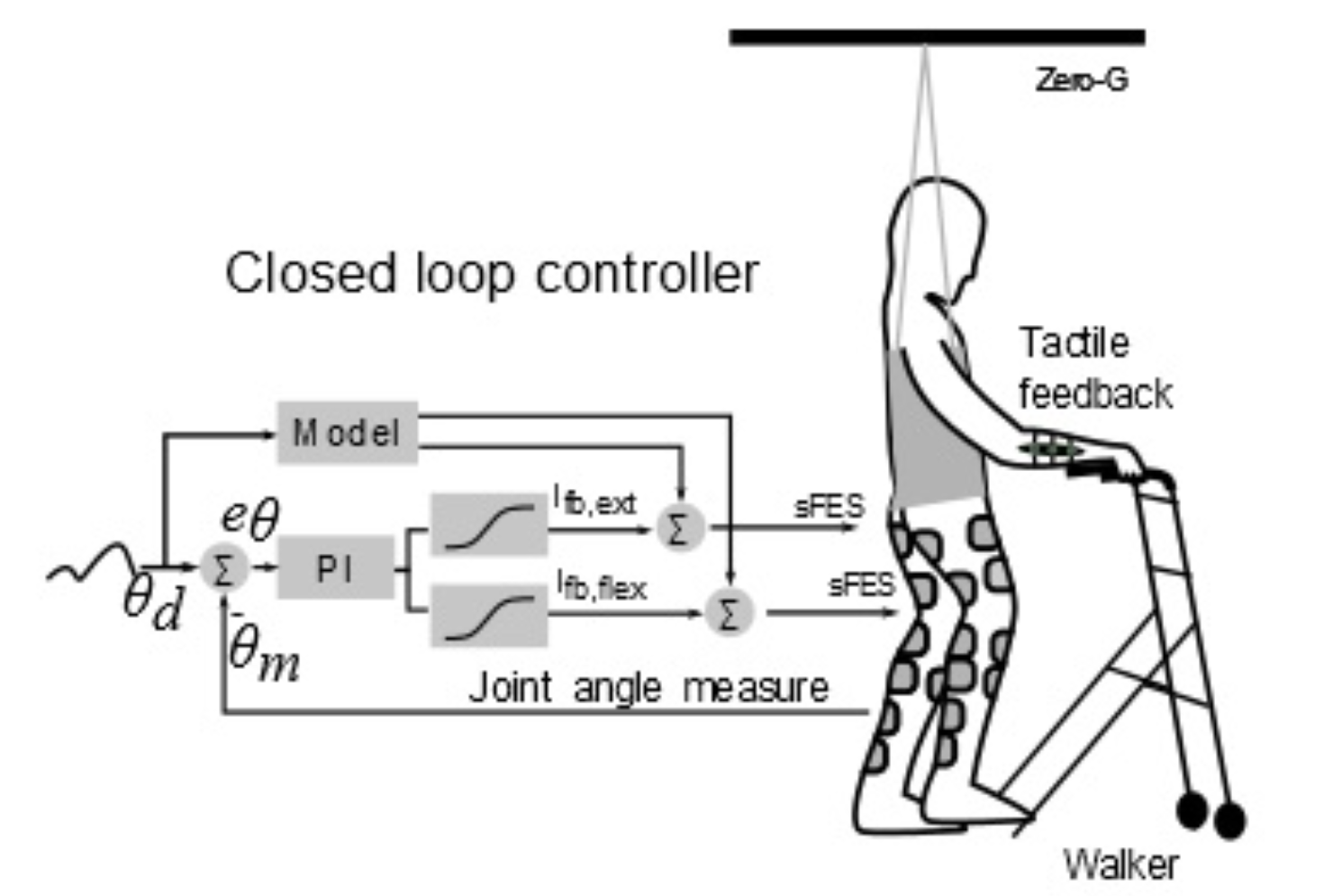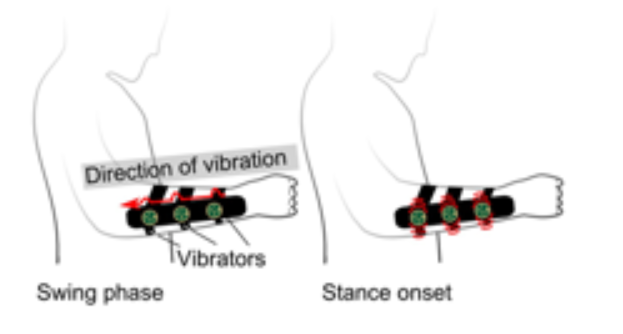Since 2016, in collaboration with Santos Dumont Association for Research Support (AASDAP) in Brazil, we have developed a multimodal rehabilitation strategy that implements muscle surface functional electrical stimulation (sFES) combined with an EEG-brain-machine interface for people with spinal cord injury (SCI). This strategy has been implemented with and without BMI.
Description of the strategy:

|
This lower limb rehabilitation strategy for people with paraplegia combines 1) BMI , 2) closed-loop sFES for gait generation, 3) haptic sensory substitution using vibrotactile sleeves worn on the forearms and 4) a gravity compensator to help the management of balance. A case study has been investigated with two patients with chronic paraplegia. |
 |
This approach is totally non-invasive and does not require any surgery. For the first time, sFES has been combined with an EEG based BMI for SCI people to trig the gait generator and the FES patterns. The BMI decoder separately identifies the right and left intents to step forward.
|
The walking trajectory is predefined and imposes a physiological gait for the patient. This trajectory is also associated to a predefined electrostimulation pattern for up to 16 lower limb muscles involved in gait, 8 muscles per each leg. Additionally, to improve the muscle activation and reduce muscle fatigue, a closed electrostimulation loop adjusts the muscle electrostimulation current with respect to the error between the measured and the desired hip and knee joint angles. |
 |
Outcomes:
This study demonstrated that chronic paraplegic patients can learn to walk again, using this totally non-invasive multimodal approach.
At the end of this case study, patients were able not only to walk with a significant degree of autonomy but in one of them substantial motor recovery was documented.
All the clinical tests and implementations have been carried out at the AASDAP, in collaboration with the Biomechanics and Motor Control Laboratory at the Federal University of ABC (UFABC, Santo André, Brésil)
Related papers.
Selfslagh, Aurelie, Shokur, S., et al. “Non-invasive, Brain-controlled Functional electrical stimulation for Locomotion Rehabilitation in Individuals with paraplegia.” Scientific reports 9.1 (2019).
Bouri, Mohamed, et al. “Closed-Loop Functional Electrical Stimulation for Gait Training for Patients with Paraplegia.”, IEEE Robio (2018).